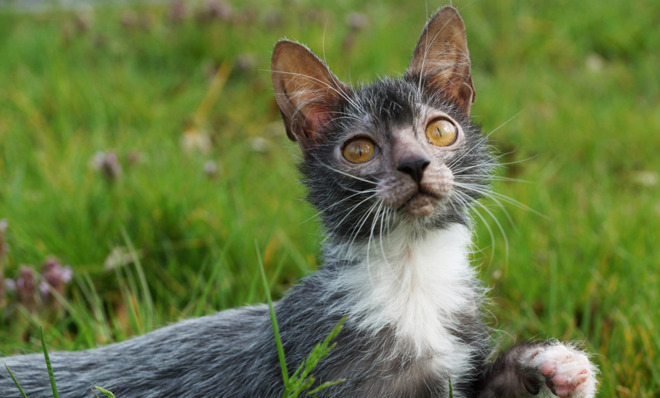How to create your own cat breed
You're welcome

The internet has fallen for a new breed of cat called the Lykoi, or the werewolf cat. Here's how Lykoi cat breeders went about making a whole bunch of these molting, wolf-looking kitties.
Step 1: Find a weird cat with a mutation you like
The Gobble family from Tennessee said they were contacted by two separate people who had litters with strange-looking cats with patches of hair. Testing revealed that cats didn't carry infectious diseases, skin abnormalities, or heart problems. They were totally healthy, despite their hair loss.
The Week
Escape your echo chamber. Get the facts behind the news, plus analysis from multiple perspectives.

Sign up for The Week's Free Newsletters
From our morning news briefing to a weekly Good News Newsletter, get the best of The Week delivered directly to your inbox.
From our morning news briefing to a weekly Good News Newsletter, get the best of The Week delivered directly to your inbox.
What these cats did have was a mutated gene that prevented some of their hair follicles from producing and maintaining hair. They are also unable to create an undercoat, or short dense hair that grows all over their body.
As a result, they have a patchy roan-colored (a fancy word for a mixture of black and white) coat. And despite the bristle-like appearance, the hair that they do have is supposedly very soft.
"There was no human intervention to create the cat," breeder Johnny Gobble told Oddity Central. "The gene is a natural mutation that appeared in the domestic cat population. We are simply using the genetics of natural processes."
Step 2: Brush up on genetics — and then make more of these cats
A free daily email with the biggest news stories of the day – and the best features from TheWeek.com
To understand how you can turn one cat with a mutation into an entire breed, you'll need to pull out your high school biology books.
As Gregor Mendel discovered in 1890, each genotype (which codes for the characteristic) has two different alleles that are inherited from each parent. Alleles can either be dominant or recessive.
For the most part, dominant alleles will show their characteristics no matter what other allele they're paired with. The only way for a recessive allele to be featured is if both alleles inherited from the parents are recessive.
The genotype that codes for the Lykoi cat is believed to be recessive. But, since there are so few cats out there like this, the Gobble family — which started the breeding process in September 2011 — are allowing crosses with black domestic short-haired cats that carry the gene but don't look like werewolves. The black hair was chosen because it showcases the Lykoi characteristics more prominently.
This breeding strategy ensures more cats that look like werewolves will be in existence, and that more cats will carry this mutated gene. But because its recessive, the chances are that unless you breed two Lykois together, you won't get a full litter of them.
Step 3: Get certified
There are several cat boards that recognize different breeds of cats. The International Cat Association (TICA) allows 55 breeds to compete for championships. It is the world's largest genetic cat registry.
The Lykoi were recognized as an experimental (developing) breed by TICA and progressed to "registration only" status in 2012.
The next steps involve breeding more Lykois, raising more them to adulthood, creating more litters, establishing more breeders, and maintaining the cats' registration status. The breeders are required to record the process in detail and list any genetic problems Lykois may have, in order to prevent creating unhealthy cat breeds.
There are about 14 litters of kittens besides the original litter, and seven registered breeders in the U.S., Canada, and France. The cats still have to be recognized as a preliminary new breed, and then an advanced new breed, before finally becoming a championship breed. The Gobbles hope to get full championship recognition and make the Lykoi a show breed by 2016.
Michelle Castillo is a freelance writer and editor and a pop culture junkie. Her work has appeared in TIME, the Los Angeles Times and CBS News.


